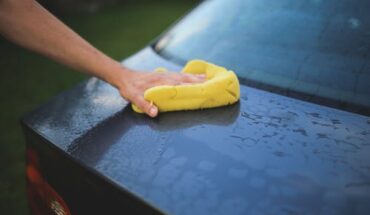The issue of water damage is one that most homeowners would like to be able to eliminate at all costs. It isn’t easy to remove and could remain in the construction materials for days if it isn’t properly dried. In addition to weakening the flooring and walls, floodwater can also threaten the structural stability of the home.
Hiring a water damage repair firm is the best alternative in such situations because it will ensure that water removal is done before costly damage can occur. Additionally, it can be ugly and expensive; it is one of the most annoying adverse effects caused by water damage. Once the water is removed, mold prevention steps must be taken.
Mold Growth Prevention
It can also spread when water evaporates into the atmosphere, especially during rainy or humid weather. This is why removing the water damage as fast as possible is essential. In addition to hiring an expert in water damage repair, These tips can help reduce the damage and prevent the development of mold.
1. Clean up and dry the areas of flood immediately.
It is imperative to act swiftly if your property has been harmed by water. The longer water lingers, the more difficult it is to restore the destruction. If you’ve had flooding, don’t put off cleaning your home for longer than 48 hours.
When you’ve discovered any areas of water, get to work drying them out. Make use of a vacuum cleaner first to dry any rugs or carpets on the floor. To complete the drying process, a fan may be used. Once the carpet is dry, you may also use a steam cleaner. Companies like PuroClean of Northwest Rochester can help you with your water and property restoration. Their expert team can save you time and money in the long run.
2. Dehumidify the home.
The growth of mold can occur quickly following a storm or flood when there is a high concentration of moisture in the air. Your home must be as dry as you can to stop the growth of mold. Switch on all fans and open the windows within your house, and then utilize a dehumidifier to keep all things dry and fresh.
You may use a humidity monitor to monitor the humidity levels of your home. The humidity should not exceed 60% in the summer and 25 to 40 percent in winter. You can visit this link for more info on the different services that a reputable firm can provide.
3. Make sure you check the exterior of your home.
Alongside checking the inside of your home, It is also essential to check the exterior of your home. In the event of a pooling situation near your foundations, it could cause cracks or mold growth, so you should be aware of it. The addition of a french drain or expanding the distance of downspouts is a possible option to prevent pools from becoming a breeding ground.
4. Get rid of things that you aren’t able to clean.
Certain items aren’t able to be dried and cleaned thoroughly. Specific equipment, for instance, that are inoperable if they get soiled. Before you throw everything away, ensure that your insurance claim includes all of these things. Keep your mind in the forefront that you’ll need proof of all the damage to your items before your claim can be accepted.
5. Make sure to sanitize everything.
Following cleaning, any water-damaged furniture and furniture should be thoroughly cleaned. You can make use of a dry and wet vacuum cleaner or a steam cleaner to clean your sofa, bed, and other furniture items. Make sure to clean flat surfaces like floors and walls by wiping them down using an aqueous solution and chlorine bleach before washing them with soap and water. Surfaces like these are less prone to attracting harmful bacteria.




